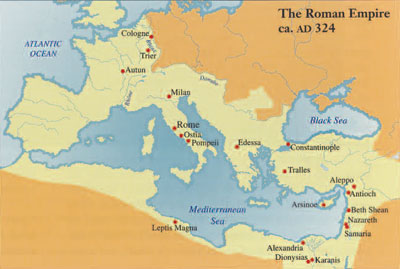
Few sites possess the lure and mystique of the ancient Near Eastern mound of Ur, with its imposing ziggurat and its so-called Royal Tombs rich in gold and silver treasures. Sometimes it can be hard to see beyond that bright and potent vision to a more nuanced picture of Ur as a vital, long-lived city-state where people lived and died, worshiped their gods, made art, played music and danced, went to school, farmed and herded and traded, and just went about their daily business.
The University of Pennsylvania Museum’s traveling exhibition is centered on the most beautiful objects from the Royal Tombs—the “treasures”—and the catalog includes fine images of each object. This companion issue of Expedition includes a sampling of those treasures, but tries as well to contextualize them—to cover the technical studies and epigraphic and ethnoarchaeological research that bring out the stories the objects have to tell, to follow them from the earth through the laboratory into the exhibit case.
Lee Home sets the stage with her introduction to the site of Ur, its place in Sumerian history, and Sir Leonard Woolley’s excavations there. Anne Draffkorn Kilmer contributes a discussion of Mesopotamian music and what can be learned of ancient scales, tuning, and melody from the unique stringed musical instruments found at Ur. Maude de Schauensee’s account of the silver boat-shaped lyre (which is not traveling with the exhibit) ties closely with Kilmer’s article in exemplifying how meticulous study using modem imaging technology can contribute to our understanding of the way in which ancient instruments were made and strung.
Edward Ochsenschlager describes an ethnoarchaeological study he headed up in the 1960s and 1970s. He examines in particular the way in which modern-day Iraqi villagers used the same raw materials—mud or clay, reeds, wood, cattle and sheep, bitumen—employed by the Sumerians in the 3rd millennium BC. It would be unwise to simplistically equate two very different cultures separated by four and a half millennia: one is largely documented through finds in graves, the other is a living society of herders and farmers. Yet the parallels in each culture’s use of locally available materials are striking.
Ur is also the locale where thousands of clay cuneiform tablets were found, and Steve Tinney summarizes the on-going research into how Sumerian youths learned to write and read cuneiform. Photographs of the tablets, some published for the first time, clearly show how the budding cuneiformist progressed from practicing single strokes to combining the strokes into signs and then to copying simple literary texts.
Surely the single best-known object from Ur is the so-called Ram in the Thicket. Yelena Rakic ponders its meaning and significance as she takes us through the story of its recovery from the “Great Death Pit.” This is the same tomb where the silver boat-shaped lyre was found. Like the lyre, the “Ram” was recently re-conserved. A photo-essay on that reconstruction, as related by conservator Tamsen Fuller, underlines the critical role such support personnel play in the success of any public exhibition. It is due in large part to their effort and vision, as guided by the curators, that the visitor to the exhibition can experience the treasures in all their gleaming magnificence.
Helen Schenck, Editor
